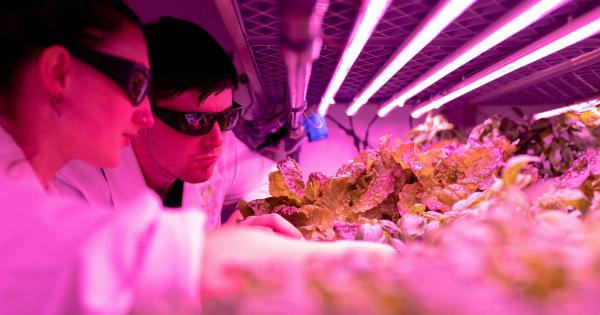A lethal fungus known as (insert name of the fungus) has been causing a significant health threat, particularly in immunocompromised individuals.
In recent research, scientists have discovered the mechanisms by which this fungus acquires drug resistance. This breakthrough sheds light on potential strategies for combating the deadly effects of (insert name of the fungus).
The Rise of Drug Resistance
Over the years, the rise of drug-resistant microorganisms has become a major concern in the field of medicine.
Fungi, just like bacteria, have developed mechanisms to resist the effects of antifungal drugs, making it increasingly challenging to treat infections caused by these pathogens.
Understanding the Lethal Fungus
(Insert name of the fungus) is a particularly dangerous fungus that primarily affects individuals with weakened immune systems, such as those with HIV/AIDS or undergoing organ transplantation.
This opportunistic pathogen can cause severe infections, such as (insert examples of infections caused by the fungus).
Unveiling the Mechanisms
In a groundbreaking study, a team of researchers set out to understand how (insert name of the fungus) acquires drug resistance.
Through a series of laboratory experiments and molecular analyses, they were able to identify key mechanisms that contribute to the development of resistance.
Mutation and Selection
One of the observed mechanisms is the occurrence of mutations in specific genes within the fungus. These mutations can alter the structure or expression of drug targets, making them less susceptible to the action of antifungal medications.
The mutated strains then have a survival advantage, as they can continue to proliferate even in the presence of drugs.
Efflux Pumps
Another significant mechanism discovered by the researchers involves the activation of efflux pumps in the fungal cells.
Efflux pumps are proteins responsible for pumping out drugs from the cell, effectively reducing their concentration within the organism. When these pumps are upregulated or mutated, the fungus can expel antifungal drugs more efficiently, rendering them less effective.
Biofilm Formation
(Insert name of the fungus) has also been found to form biofilms, which are multicellular communities of fungal cells encased in a protective matrix. Biofilms serve as a defense mechanism, shielding the fungus from the effects of antifungal drugs.
Within the biofilm, the fungus can communicate and exchange genetic material, including drug resistance genes, further contributing to its resilience.
Horizontal Gene Transfer
Horizontal gene transfer is another significant mechanism identified by the researchers. This process involves the transfer of genetic material between different organisms, including bacteria and fungi.
It allows the fungus to acquire genes responsible for drug resistance from other microorganisms, potentially leading to the emergence of highly resistant strains.
Role of Environmental Factors
The researchers also found that environmental factors play a crucial role in the acquisition of drug resistance by (insert name of the fungus).
The fungus can adapt and evolve in response to different conditions, such as temperature, pH, and exposure to antifungal agents. These variations in the environment provide selection pressures that favor the growth and survival of drug-resistant strains.
Implications for Treatment
Understanding how (insert name of the fungus) acquires drug resistance has significant implications for the development of more effective treatment strategies.
By targeting the identified mechanisms, researchers can work towards developing new antifungal drugs or combination therapies that can overcome drug resistance.
Combating Drug Resistance
Efforts are underway to develop novel antifungal agents that can effectively target drug-resistant strains of (insert name of the fungus).
Researchers are exploring various approaches, such as inhibiting efflux pumps, disrupting biofilm formation, and designing drugs specific to mutated drug targets. Additionally, the knowledge gained from this research can be used in surveillance and infection control measures to prevent the spread of drug-resistant strains.
Conclusion
The recent research revealing the mechanisms behind the acquisition of drug resistance by (insert name of the fungus) provides valuable insights into combating this lethal pathogen.
The findings pave the way for the development of innovative treatment strategies that can effectively target drug-resistant strains and improve patient outcomes.































